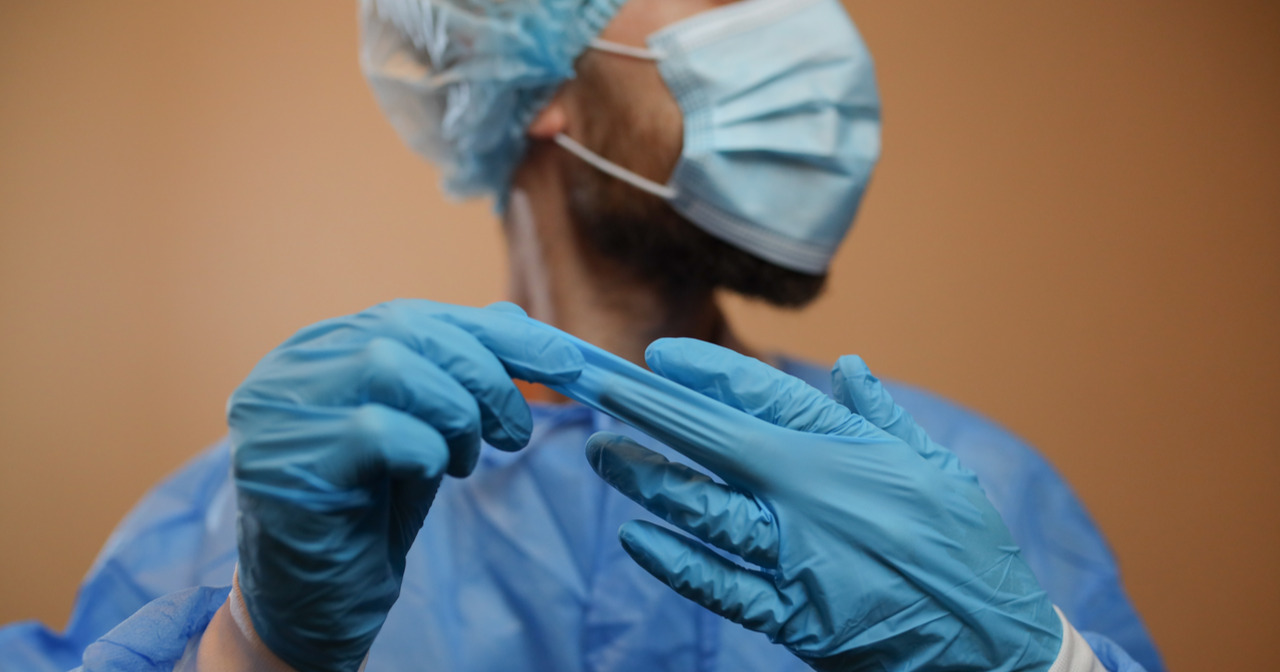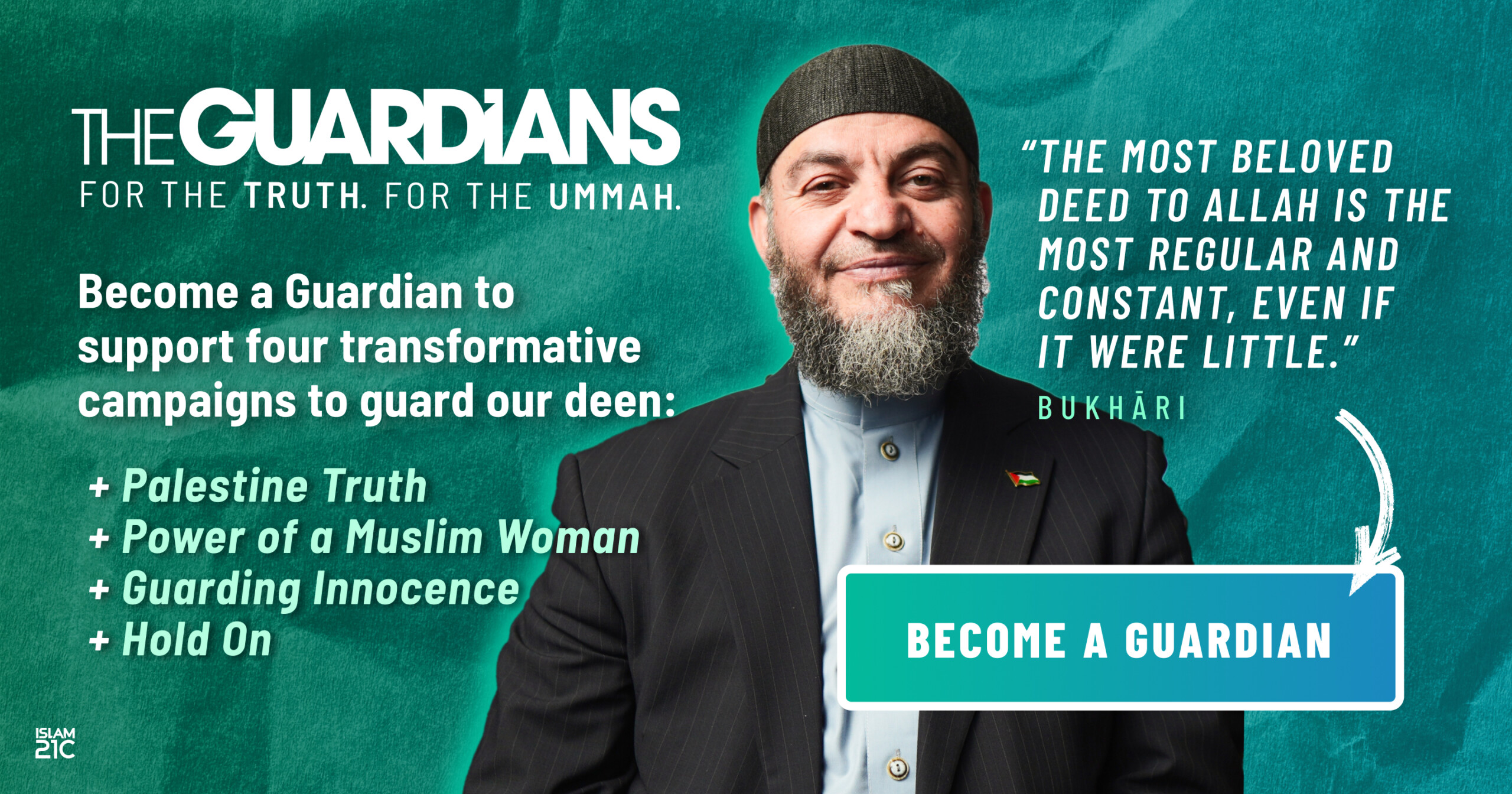With increasing numbers of hospitalisations for COVID-19, I believe readers would be interested in getting a detailed account of the happenings within hospital walls from the perspective of both patients and clinicians. In these uncertain times, clarity and removing fear of the unknown should help in reducing anxiety when you or a family member are admitted. I intend for this article to also serve as an exhortation to those not abiding by national guidelines.
As doctors, we realise that the mortality rate is rising in the hospital when we are hunted by the bereavement office to clear the backlog of death certifications. Last week, the UK finally hit the milestone of 100,000 COVID-19-related deaths. The increasing death toll, combined with the disproportionate impact the virus is having on ethnic minority communities, means that most of us know a family member or friend who has been hospitalised after contracting the virus.
Admittedly, I was amongst those in the early part of this pandemic who thought there was fearmongering spreading in the nation from what was merely another type of common flu that routinely takes the lives of many every year. Since then, I have been on the frontline and witnessed the unprecedented challenge we are facing against this new virus. Of course, the deniers will continue to exist. Some will deny the need of a vaccine, others deny the death toll, and a few will deny the very existence of COVID-19 altogether! I empathise how challenging it is to navigate through the information overload in this volatile situation, not helped by inconsistent messages from our leadership. However, it is still disappointing to see some of our fellow Muslim brothers and sisters play a role in spreading the misinformation and conspiracy theories surrounding this virus. They are ignorant of the consequences of their actions, and more worryingly, are ignorant of the teachings of the Qur’ān regarding handling news.
“O believers, if an evildoer brings you any news, verify [it] so you do not harm people unknowingly, becoming regretful for what you have done.”[1]
The Government will no doubt be held responsible for their decision-making leading up to this disastrous death toll, but individuals are also guilty for the deaths they have caused by not heeding national advice and spreading false rumours.
With that introduction, let us now explore what happens in the hospital.
Who is admitted to hospital?
The blood oxygen saturation (the percentage of haemoglobin attached to oxygen) for the majority of people should be above 96%. COVID-19 impairs the function of the lungs in oxygenating blood, causing a reduced oxygen saturation. If this falls below 90%, supplementary oxygen is needed. It is at this point that patients are admitted to hospital. However, it is common to see many people presenting to A&E at oxygen levels far below 90%. These people present to hospital only once they begin to feel very unwell and short of breath.
On that note, I would strongly advise people to invest in a pulse oximeter to monitor the possible downward trend in their oxygen saturations and expedite their arrival at A&E. Patients who present to hospital prior to a confirmed COVID-19 diagnosis will receive a swab upon arrival and will be streamed to different areas based on clinical suspicion of the person having the virus.
How many COVID-19 patients are there?
COVID-19 patients in hospital can be split into two groups; those who acquired it in the community and those via nosocomial transmission (hospital acquired) whilst admitted for other illnesses. The latter is a sad reality but one we have had to come to terms with. The number of cases has reached a point where the majority of hospital wards now have COVID-19 patients, which means that isolating patients is becoming increasingly difficult with short-staffing compounding the issue, as it means staff are cross-covering between COVID-19 and non-COVID-19 wards.
To combat nosocomial transmission, hospitals have been reallocating doctors and nurses from other specialities like sexual health, dermatology, radiology and microbiology to support the medical wards and restrict movement of staff between wards. Elderly patients are most in danger of getting infected, because their discharge from hospital is delayed whilst awaiting transfer to nursing homes and arranging care at home. In short, it is not a good time to be an inpatient.
How do we treat COVID-19?
I will delve into the clinical management of COVID-19 here, as I believe a lack of knowledge creates fear of the unknown. This fear is multiplied manifold for relatives who are unable to visit and see their loved ones in hospital. When patients are initially admitted, the consultant will make a judgement of the ceiling of care (the highest level of care deemed appropriate) should the patient deteriorate. In most hospitals, the ceiling of care is divided into levels 1, 2, or 3, and can be amended during the course of the patient’s time in hospital. This ensures that appropriate patient-centred care is delivered, which varies between patients.
I will go through a case study to help explain what these levels of care look like in practice. If you are a family member of a patient who has been admitted, do not be frightened if you receive a phone call from doctors discussing escalation and CPR decisions with you. This is done routinely for all patients to pre-empt and prepare for the worst, so that if things rapidly change, there is an agreed plan in place and the patient is not put through undue harm.
Case study
Umair is an independently mobile 50-year-old man who has type 2 diabetes. He attends A&E with difficulty in breathing. A positive COVID-19 swab alongside oxygen saturations of 88% means he is swiftly transferred to a COVID-19 ward. The consultant decides on admission that if Umair were to deteriorate, he would be for level 3 ceiling of care. His breathing is supported with 1 litre of oxygen per minute given through a face mask. This is done in order to maintain his oxygen saturations above 90%. An antiviral drug (remdesivir) and a steroid (dexamethasone) are initiated to slow down the inflammatory effects of the virus. In addition to this, a blood thinner (enoxaparin) is injected daily into his (quite large) tummy since the virus increases the risk of Umair developing blood clots. He is doing well after days 1-3 of being admitted, with the only concern being his rising blood sugar levels caused by the dexamethasone.
At day 5, we find that Umair has acquired a superimposed bacterial infection, so he is prescribed antibiotics. His supplementary oxygen requirement begins to increase over the next few days to 3 litres in order to maintain 90% target oxygen saturations. Then suddenly on day 9, Umair becomes very unwell, with his oxygen levels dropping to 75%, alerting the nurses to turn his oxygen to 10 litres, but he is still struggling to go above 88%. His chest X-ray shows worsening COVID-19, and a CT scan of his lungs rules out the development of a pulmonary embolus (a blood clot in the lungs). The medical team refer to the escalation plan made by the consultant on Umair’s admission, wherein it is clearly documented that the ceiling of care for Umair is level 3. Without delay, he is transferred across to a specialist ward for CPAP (level 2 care) and is selected to be trialled on a monoclonal antibody known as tocilizumab. A CPAP (continuous positive airway pressure) machine delivers oxygen into Umair’s lungs at a very high pressure under a tight-fitting mask; if you are trying to imagine what a CPAP mask looks like, picture Bane from ‘The Dark Knight Rises’.
After two days of CPAP, Umair once again deteriorates, so the intensive care doctors are called to intubate and mechanically ventilate his lungs. He is now receiving level 3 care in ICU (intensive care unit), which is the ceiling of his care. There is no more that doctors can do if this fails to maintain his oxygen saturations. He remains in an induced coma for two weeks. He is proned (laid on his tummy) regularly whilst his lungs start to recover.
To end on a positive note, Umair makes a full recovery and returns home to his family with long-term rehabilitation. He will be asked to return in 12 weeks for a chest X-ray to assess the long-term effects of the virus, if any.
Discussion of case study
As you can see, the treatment protocol is quite straightforward. The biggest challenge that clinicians are faced with today is the logistical management in moving patients between levels of care, when resources such as CPAP machines and ICU beds are finite and at a breaking point.
CPAP can be a traumatic experience for patients. We have all experienced the feeling of popping our heads out of a speeding car window. The gush of cool air is satisfying for a few seconds when you are falling asleep at the wheel or on a hot summer day, but imagine experiencing this for hours on end! This is what CPAP in level 2 care feels like, and this is why most elderly patients cannot tolerate keeping the mask on.
I remember on one occasion, nurses called me to palliate a struggling man whose life was dependent on keeping the CPAP mask on at all times. Gasping for breath, he told me of his desire to show the pictures in his hand to his wife. I shouted in his ear over the noisy CPAP machine, saying in simple terms, “If you take this mask off, you will not be able to show her, so are you going to keep it on or take it off?” I was really asking him whether he was ready to die. He looked me in the eye and said, “I will try one final time.” That was the last I saw of him. It is not uncommon for those who do successfully tolerate CPAP and recover to later show signs of developing PTSD (post-traumatic stress disorder).
A friend of mine currently working in ICU asked me to point out to readers that there is no special cure delivered in ICU. The ventilator merely takes over the function of the lungs temporarily to buy time for the body to recover itself. Whether or not the body is able to do this is determined by the physiological reserve of each individual based on their co-morbidities (other concurrent illnesses) and functional status in their activities of daily living.
Unfortunately, the vast majority of patients are not like Umair. The frail and delirious would not tolerate anything beyond level 1 ward-based care. The ceiling of care decision made by the consultant is in the patient’s best interest and is based on a host of factors.
The deteriorating patient experience
The loneliness and social isolation from family and friends is having a noticeable psychological effect on many patients. As Muslims, our companion is Allāh Who knows what no one knows, Who knows us better than ourselves, and Who is always listening and responding to our every call. I wish everyone had this belief. Instead, I see patients sat idle, losing the will to live as they find no happiness or joy in life anymore. As Ibn al-Qayyim said, “For everything a slave loses there is a substitute, but the one who loses Allāh will never find anything to replace him.” Due to various reasons, many elderly COVID-19 patients go into an acutely confused state known as delirium. They begin to behave unusually, which can be distressing to see and can cause insomnia for themselves and other patients nearby.
Shortness of breath is the most common clinical manifestation of COVID-19-related deterioration. Days 7-14 are the danger zone when patients can suddenly drop their oxygen levels and ‘fall off a cliff’. I have come to accept that the patients I say goodbye to at the end of my shift may be moved to the mortuary by the next morning. The unpredictable nature of who will ‘fall off the cliff’ has shown me first-hand that Allāh alone is the One who gives life and death.
“Indeed, to Allāh belongs the dominion of the heavens and the Earth; He gives life and causes death, and you have not besides Allāh any protector or any helper.”[3]
Part of my job is to be the intermediary between unwell patients and their family members, and to provide the latter with regular updates on their loved ones’ wellbeing. It really is an emotional rollercoaster for families, some of whom call to challenge our treatment, others incredibly grateful, and many who are grieving the loss of their loved ones. In all honesty, I do not know what to say to a non-believer in Allāh and the Hereafter when breaking bad news – there is genuinely no hope to give them. Their Jannah has come to an end.
Despite all the challenges associated to being unwell with COVID-19, I want to stress that these are not an excuse to miss the prayer. We are slaves of Allāh in every situation and must not forget our obligations in times of sickness, even if it means we must pray lying supine and bedbound. One of my happiest moments at work was the rare sight of an elderly Bengali man praying at his bedside. As family members, we should take the initiative of asking nurses to remind our loved ones of the five prayer times, taking inspiration from ‘Umar (rady Allāhu ‘anhu), who was concerned about his salāh as he fluctuated between levels of consciousness in his final moments. This is the true manifestation of love for one another.
End of life
When patients show no clinical response to the treatments discussed above, and when all options have been exhausted, then the decision is made to commence them on the end-of-life pathway. If available, the patient will be moved to a private cubicle and medications will be prescribed to alleviate symptoms of pain, agitation, secretions, and respiratory distress. What we term TLC (tender loving care) is prioritised to ensure that the patient’s final moments are as comfortable as possible. Family members are notified as a priority to say their farewells, but often cannot stay with them until the departure of the soul.
I recommend leaving behind a Qur’ān cube or something to that effect, because despite the awesome care that nurses deliver, they are not going to remind the patient of the shahāda during those final breaths. Anticipating the likelihood of imminent death, I would also advise families to get in contact with the medical team and request that the death certification and relevant paperwork be completed as soon as possible, in order to hasten the burial as per the sunnah.
Personally, I have learnt many lessons from witnessing a multitude of COVID-19 deaths on my ward. The most poignant lesson is that everything in this world shall come to an end – the good times, the bad times and this virus. The wise person should prepare for that which is eternal.
The last moments of a person’s life is a dire sight. I have reflected on the deaths of our pious predecessors who are narrated to have died reciting the Qur’ān. If I want to spend my last moments with Allāh’s words before meeting Him, I rhetorically ask myself: how will I access those words when my eyes are fatigued and my brain can no longer process information, except by securing it in my heart today?
Five take home messages
1) Trust the system! Our healthcare system is not like that in the USA (yet)
2) Follow government guidelines
3) Take the vaccine
4) Buy a pulse oximeter
5) Death is inevitable, so be the clever one who the Prophet (sall Allāhu ‘alayhi wa sallam) described in the following hadīth:
Those who remember death often and have prepared for it with good deeds, those are the wisest.[4]
I hope this article has made you more informed of the frontline battle against COVID-19 and is especially helpful for those with loved ones admitted to hospital. I must re-iterate that the above are my personal experiences, which may not be reflective of other hospitals and doctors in the NHS.
[donationbanner]
Source: www.islam21c.com
Notes:
[1] Al-Qur’ān, 49:6
[2] Al-Do’ wa Al-Dawā’, Chapter 49
[3] Al-Qur’ān, 9:116
[4] Sunan Ibn Mājah 4259









Jazaak Allahu khair brother for making the time to write this when you obviously have so much to deal with right now.
I apologise if this is something that others are doing and I just haven’t come across it but looking around and speaking to people in my community, I feel that part of the discourse around the virus should also now focus on helping communities as a WHOLE (not just individuals and families) make sense of the grief and deep sense of loss that they are feeling.
Many of us were born in or have lived in the same communities for many years and our parents have lived here for 3, 4 decades. I’m not just talking about the ‘practising’ community but about everyone, different races, school’s of thought etc. This second variant of the virus has been far more devastating and, as we look around, we feel a deep sense of loss because so many of our elders, who watched us grow up, have passed away: aunty across the road, aunty up the road, uncle up the road, sheikh so and so etc. They have left a void which many of us second generation Muslims are still too young to fill. Many women, young and old, have become widows and we have lost people who were active in the community whether through education and religion or sports skills etc. I feel that a sense of sadness is beginning to overcome people as the loss to the community as a whole becomes more and more visible.